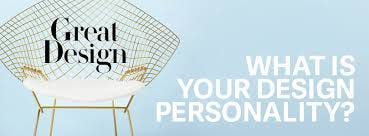PERSONALITY IN DESIGN
A good design stands out from a sea of competitors through its personality. As designers, we have the capability to express personality through well-conceived designs that forge an emotional connection with the visitor. Odds are that the standout web designs are the ones that invoke a sense of “ personality.” Web design with personality isn’t something that just happens organically — it’s a deliberate approach to web design.

Design thinking takes an adaptive and holistic view toward product and user needs. It involves engaging in observation, fast learning, visualization, prototyping, and enhancing customer experience. Personality traits have been widely examined in the education field and at the same time design thinking is the main topic of design education.
When you own your personality as a designer, you carve out a space for yourself in a crowded field. The more you rely on your authentic self as the backbone of your brand, the more unique you will be and the more pronounced your positioning will be.
Designing with personality actually involves two personalities:
· Yours
· the one your client wants to convey
Let’s talk about yours, first. Your web design business, no matter its size, should be branded somehow — that’s a given. But what you might not have down is that your brand needs to be based, in some part or in large part, on your personality. Not your entire personality, just the parts that are relevant to your business.
Whether you-the-designer have a personality that’s bold and brash, warm and whimsical, or completely quirky and surreal, own it and make it evident in your branding…especially your online branding.
TIPS FOR DESIGNING WITH PERSONALITY
· Design with traits in mind
Come up with a list of traits that the brand or project wants to exhibit. These traits could be provided by the client , but if the client isn’t totally clear on it, you might have to uncover them yourself. Refer to conversations with the client, any information you have about the business, and even observations you make about what the client is drawn to or envisions.
· Think about characteristics:
When you’re in the planning stages for a new design, think about some of the characteristics you want to emphasize. Each “type” comes with a built-in set of general characteristics — things that a type of person tends to put forth, like level of formality or colour schemes. Think about ways to translate a physical presence to a website.
· Remember what it isn’t:
When you’re working on a design, keep in mind what the project shouldn’t be. This will keep you focused on the personality you’re working with, and help you edit out elements that don’t fit well.
· Find great visuals and fonts:
If you’re stuck on ideas, do some strategic image searches. Typography can make or break any design. While this particular post isn’t going to be a deep-dive into fonts, just know that a lot of your web design’s personality will be communicated via the typeface choices you make.
The benefit of designing with personality:
When you build your web design brand with a heavy dose of personality, you’re doing two things:
· you attract the right clients
· repelling the wrong ones.
If you’re cutting-edge modern but sweet, you’ll attract clients who want their own design projects that will tap into those same feelings. And you’ll be less likely to get inquiries from potential clients who are totally wrong for you.
If you’re bold, your evident boldness will attract clients who resonate with an overt design style and repel anyone looking for something basic and cutesy.
Those clients won’t immediately resonate with what you offer, they won’t find your portfolio as compelling as your ideal client would, and they might even be put off. While going around repelling people isn’t what most of us are after in our regular lives, in our business lives, this is a great strategy when harnessed well.
Just as our personalities shift with the context of communication in real life, they must shift in the projects we design. There’s no one-size-fits-all solution. If we stop thinking of the interfaces we design as dumb control panels, and think of them as the people our target audience wants to interact with, we can craft emotionally engaging experiences that make a lasting impression. One of the greatest things to keep in mind about designing with personality is that it’s just plain fun.
Personality is a risk, but there are many real-world examples that suggest the rewards are worth it!